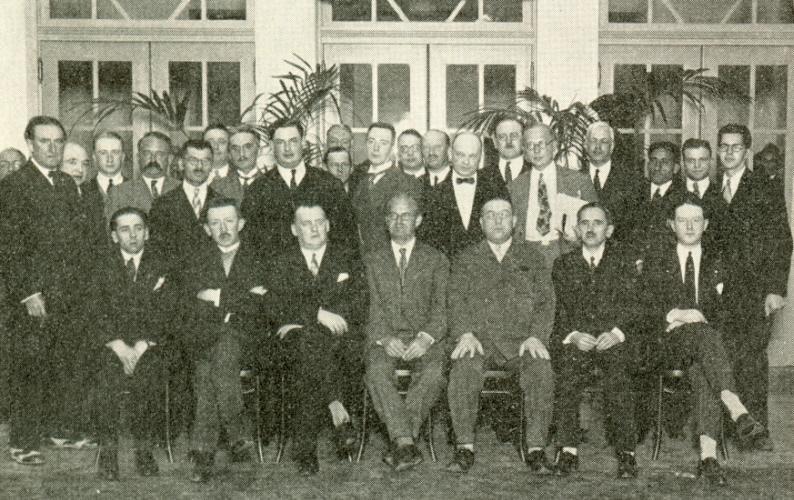
When contacting us by e-mail, correspondents are asked to include their name and full postal address and, when providing information, to quote exact book and magazine sources. The word ‘chess’ needs to appear in the subject-line or in the message itself.
| First column | << previous | Archives [36] | next >> | Current column |
Regarding our feature article on Sultan Khan Leonard Barden (London) comments on the following passage quoted by us from page 215 of The Guinness Book of Chess Grandmasters by W. Hartston (Enfield, 1996):
‘Eighteen years later, however, [i.e. in 1951] when he [Sultan Khan] was shown the moves of the games in the world championship match between Botvinnik and Bronstein, he is reputed to have dismissed them as the games of two very weak players.’
After mentioning that the source of this reputed dismissal was unknown to us, we also quoted William Winter in CHESS, February 1963, page 148:
‘I remember vividly my first meeting with the dark-skinned man who spoke very little English and answered remarks that he did not understand with a sweet and gentle smile. One of the Alekhine v Bogoljubow matches was in [a] progress and I showed him a short game, without telling him the contestants. “I tink”, he said, “that they both very weak players.” This was not conceit on his part. The vigorous style of the world championship contenders leading to rapid contact and a quick decision in the middle game was quite foreign to his conception of the Indian game in which the pawn moves only one square at a time.’
Leonard Barden informs us:
‘Hartston’s story about Botvinnik-Bronstein had appeared in one of my columns. My own source was the Pakistani A. Kitchlew, a strong player who competed in the Hastings Challengers’ tournament in the 1950s and 1960s and a few years ago won a lower section at Jersey when in his eighties. Kitchlew and I both played for the Linguists Club of Kensington, London, team in the National Club Championship around 1956, and he then told me that he knew Sultan Khan and that Sultan had indeed made the comment I quoted. I had and have no reason to believe he was embellishing the tale.
It seems quite a reasonable remark from a world-class player about the 1951 match, where the quality was uneven.’

Sultan Khan is standing third from the right in this group photograph taken at Liège, 1930 (American Chess Bulletin, September-October 1930, page 140). A challenge to readers is to provide a complete caption/key.
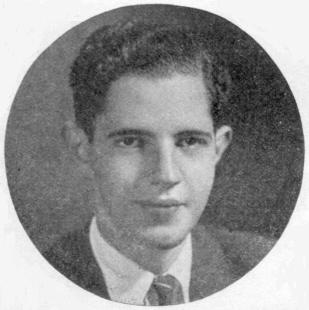
Isaac Kashdan
Michael McDowell (Westcliff-on-sea, England) draws attention to an article by I. Kashdan about chess problems on page 29 of Chess Review, January 1933. Some extracts are quoted below:
‘For years there has been a division of camps between chess Players and Problemists. The two classes apparently had nothing in common. The player would look upon problems as sheer waste of time, exhibiting positions that were practically impossible of occurrence over the board. On the other hand the problemist found the game too dry, uninspiring, lacking in that wit and polished stratagem to be found in his clever creations.
Personally, I was brought up in both camps. I learned most of my chess under the tutelage of a clique of problem composers, of whom Maxwell Bukofzer of Long Island was the leader. ... I sent [H.L. Dolde, who ‘was running a wonderful column in the Pittsburgh Post’] some of my efforts, and what a thrill when the first one was published. It was all very absorbing, and I could hardly understand the attitude of the players, who would sneer when they passed the table at which our problem coterie was gathered, and sit down to play their “useful” games.
I found, when I began to play more chess, that problems had improved my game considerably. I do not hesitate to recommend solving as a method of advancing one’s playing strength. Problems are the most concentrated form of chess strategy. A problem may contain dozens of ideas, any one of which occurring in a game would be considered brilliant and remarkable. The average mobility and scope in a problem are so great that after a course in solving the positions in practical play look easier. The powers of imagination are greatly extended in problem work, an important asset for over the board play. However, all this is beside the point. Don’t solve problems because it will benefit your playing ability. That will come of itself. It is the sheer joy of peering below the surface and revealing the composer’s thoughts that is the chief aim.’
From pages 15-16 of the Chess Monthly, September 1888:
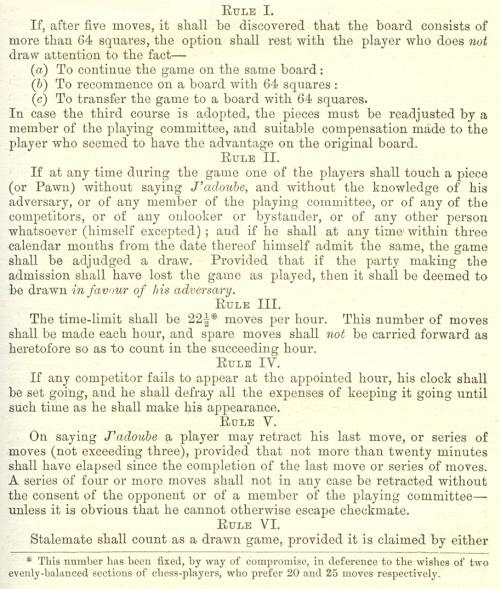

Jan Kalendovský (Brno, Czech Republic) draws attention to a webpage giving details of films in which Richard Réti’s wife appeared.
From Pablo S. Domínguez (Madrid):
‘I quote from pages 229-230 of The King by J.H. Donner (Alkmaar, 2006):
“The following position arose after White’s 77th move and, despite the fact that the assistance of both seconds was required to convince Kotov and only after the latter had greatly upset his opponent claiming that a method had recently been found in the Soviet Union for winning this ending, there was no changing the outcome: an irrevocable draw.
Mate would only be possible after a grave error by the defender.”
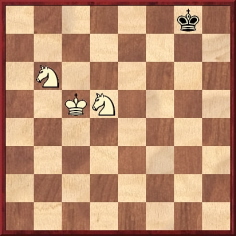
The diagram is labelled “Kotov-Najdorf Zurich 1953”. This section of Donner’s volume is described as a “fragment of an endgame book” (page 229), and on page 244 the source is given as “M. Euwe & J.H. Donner, Het Eindspel 1 Utrecht 1977”.
Firstly, we reproduce the conclusion of the game as given on page 319 of the tournament book Schach-Elite im Kampf (‘Bearbeitung der 210 Partien durch Dr. Max Euwe’):
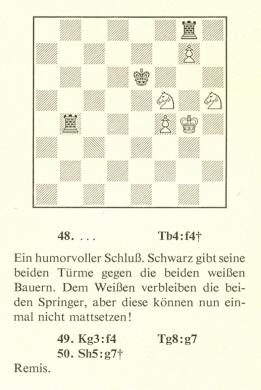
As regards possible prolongation of play, all we can add for now is what appeared at the end of the game on page 260 of The World Championship Candidates’ Tournament 1953 by B.H. Wood (material initially published as a supplement to CHESS and, as announced on page 371 of the magazine’s 18 June 1955 number, issued in book form in June 1955):
‘Now Kotov maliciously announced that he intended to play on, to see whether Najdorf might blunder into being mated inside 50 moves. Najdorf complained wildly to the tournament committee against the idea of a Grand-Master being subjected to such an indignity; and finally Kotov agreed to the draw ...’
How did the improbable story arise that the game continued until move 77?
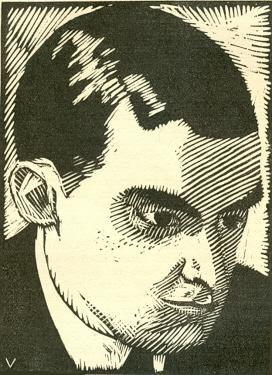
From page 23 of The Bright Side of Chess by Irving
Chernev (Philadelphia, 1948):
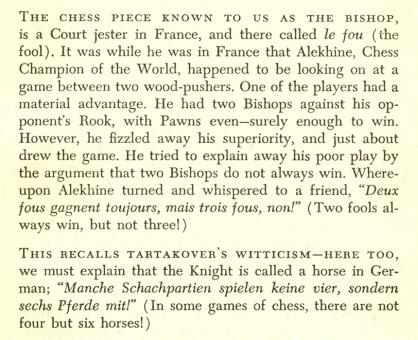
Earlier sources for these quips are sought. Regarding the Alekhine one, the following appeared on page 49 of CHESS, January 1942:
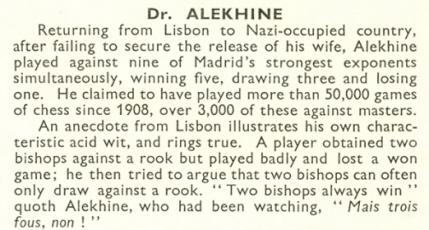
John Blackstone (Las Vegas, NV, USA) submits this game:
A. Higuera – R. Solana1 f4 e5 2 g3 exf4 3 gxf4 Qh4 mate.
Source: column by Herman Steiner, Los Angeles Times, 8 August 1945, page A7.
Mario Manasse (Milan, Italy) refers to the strange claim made on behalf of an unknown woman player (C.N. 4085). In the early 1990s David Pritchard sent us from one of his scrapbooks an item published in the Daily Sketch in 1936 (exact date not recorded):
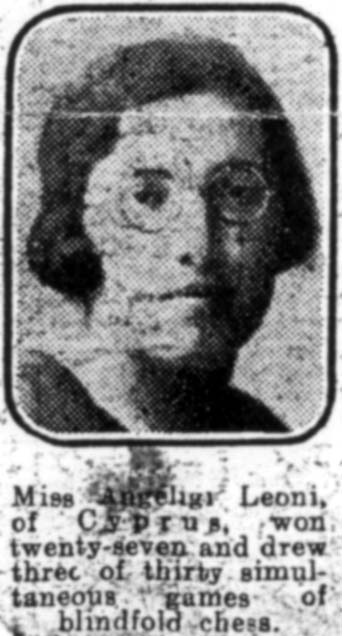
‘Miss Angeligi Leoni, of Cyprus, won twenty-seven and drew three of thirty simultaneous games of blindfold chess.’
Our correspondent suggests that her forename was probably Angeliga rather than Angeligi.
Mr Manasse also comments on the term ‘isolani’, a plural noun frequently used in the singular. Our Earliest Occurrences of Chess Terms article lists the following with respect to English-language sources:
‘White has an “isolani”.’ My System by A. Nimzowitsch (London, 1929), page 187.
Below is the relevant passage from the original German edition (page 260):

We are seeking earlier uses of the word in a chess context, as well as clarification as to whether the singular form should be isolanus (Latin) or isolano (Italian).
Michael McDowell (Westcliff-on-sea, England) proposes a discussion of J.G. Campbell, and the present item makes a start with some quotes about him.
‘After the closing of Kling’s Salon, he migrated to Starey’s in Rathbone Place, at that time the headquarters of such experts as Harrwitz, Falkbeer, Brien, Wormald and Zytogorski. With all of these players, now famous in story, Campbell played matches and was victorious. I am not quite certain as to Harrwitz; but if he did not beat him in a match, report credits him with having won a majority of off-hand games. When Paul Morphy visited this country in 1858, Mr Campbell’s friends offered to back him against the famous American, but, owing to circumstances for which neither champion was in any way responsible, the contest never took place. In 1861 Campbell played a match with Thomas Wilson Barnes, Buckle’s favourite pupil, and also for a short time Morphy’s most formidable opponent. This was one of the most remarkable matches ever played. [Campbell was 1-6 down, but won 7-6.]
‘[Later in 1861] I was present at a supper on the occasion of Paulsen’s blindfold séance at Simpson’s, when Mr Augustus Mongredien rose, as was his custom after supper, and delivered a very pleasant speech, in the course of which he proposed to back Campbell in a match against any player in England, offering himself to give £50 towards the stakes. In 1862 Campbell encountered the great Anderssen in two off-hand games, of which he won one and drew the other. Mr Campbell was one of the few players who never failed to win in a match. In this respect he is to be bracketed with Morphy and Steinitz. Mr Campbell was also a distinguished problem composer, and is considered the pioneer of the modern style of composition.’
‘No braver, more lovable, or more chivalrous knight ever fought under Caissa’s banner.’
These quotes come from the chapter on ‘James [sic – Joseph] G. Campbell’ (1830-91) on pages 65-68 of The Knights and Kings of Chess by G.A. MacDonnell (London, 1894). MacDonnell being a relentlessly fizzy writer, it is worth comparing his remarks with chess magazines’ comments about Campbell following his death.
The obituary on page 67 of the February 1891 BCM stated
that Campbell had died on 1 January, of pleurisy. He was ‘an
excellent problemist, but he was also a remarkable strong
natural player, and took high rank in the list of Metropolitan
amateurs’. The two Anderssen games were mentioned (being dated
1860 by the BCM and
recorded as one win apiece), and Campbell ‘was the winner of set
matches against Barnes, Falkbeer and Wormald’. He ‘also
encountered Messrs. Brien, Harrwitz, Horwitz, Zytogorski, and
other leading players of those days, and bravely held his own
against them’.
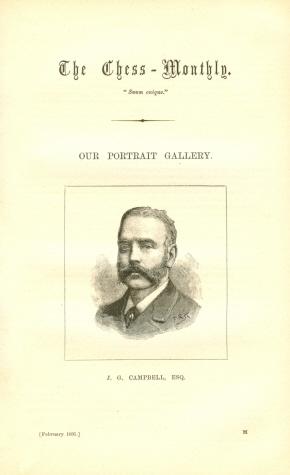
Page 161 (front page) of the Chess Monthly, February 1891
There is a small discrepancy regarding Campbell’s date of death (1 or 2 January – the obituary on page 162 of the February 1891 Chess Monthly gave the latter). That article reported that Josef Kling ‘soon detected Campbell’s exceptional aptitude for the game’ and that Campbell played two games (a win and a draw) against Anderssen at Löwenthal’s house. As regards the year of that meeting, it seems that both MacDonnell (‘1862’) and the BCM (‘1860’) were incorrect and that the Chess Monthly (February 1891, page 184) was right to put ‘1861’. Anderssen visited London that year, and Campbell’s win was given on pages 261-262 of the 1861 Chess Player’s Chronicle.
The Chess Monthly (page 162) also described Campbell as ‘one of the best problem composers of his time’, and reproduced the comments of Frank Healey, who referred to Campbell’s ‘genius as a composer of rare depth and originality’ and ‘his talent as a player with the well-merited reputation of being second to none of his contemporaries’.
Browsing through the Chronicle of the late 1850s and early 1860s, Campbell’s peak years, we came across no particularly striking games by him, but readers are invited to expand upon the above jottings.
From page 98 of the Chess Monthly, December 1888:
‘Since Morphy there is perhaps no other young player whose record of success can be compared with that of v. Bardeleben. He has played in four tournaments as a youth, and in two he was first, and in the others placed.’
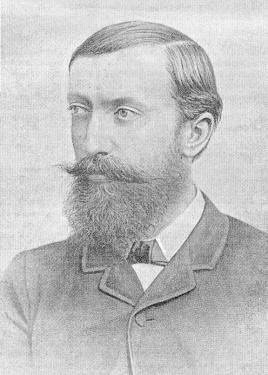
Curt von Bardeleben

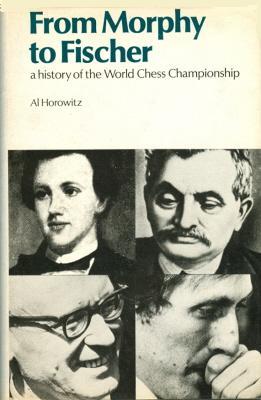
Trevor Moore (Baughurst, England) points out a number of errors in Al Horowitz’s book on the world chess championship, including the following:
Fischer was born in 1943, and page 202 is therefore accurate in saying that at the 1962 Interzonal tournament in Stockholm he was aged 18.
Whether this contradictory information is evidence that the Horowitz book had more than one author is an open question.
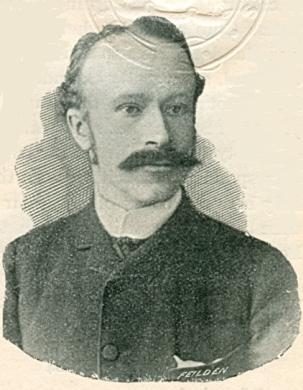
We wonder whether many, or any, readers will recognize this figure, a household name in chess. Culled from page 123 of The Chess Bouquet by F.R. Gittins (London, 1897), the picture is of David Forsyth (1854-1909). Gittins’ book reported:
Usage of the notation was never altogether standardized, and a discussion of the variants on pages 82-83 of the February 1892 BCM included a contribution from Forsyth himself.

There was a news item about the bust on page 137 of the June 1944 BCM:

‘I believe I must buy myself a set of chessmen. I don’t think we have one in the house.’
These words of Capablanca’s were quoted by Olga Capablanca Clark on page 7 of Last Lectures (New York, 1966), and on page 16 the Cuban provided confirmation:
‘I am 53 years old and began to play at the age of four. During those 49 years, and particularly during the first 15 years when I was known as a child prodigy, I received a great number of chess sets as gifts. I especially remember a very handsome and rare set which I tried to hold on to, but which has gone with the others. The result is that today I do not possess a single set. My travels, my changes of residence, and my children did away with every single one.’
This brings to mind Fred Reinfeld’s comment on pages 43-44 of The Treasury of Chess Lore (New York, 1951), when introducing an article about Reshevsky by Fred M. Wren:
‘Wren’s genial indignation at Reshevsky’s lack of a chess set reminds me of a story of du Mont’s about a visit to Capablanca, with the great man bringing out a weird conglomeration of 32 tatterdemalion orphans. The only two pieces that matched were the white rooks – both lumps of sugar.’
Wren’s article, from pages 105-107 of the April 1949 Chess Review, recalled a report in the magazine some years previously:
‘Then came the shock. ... the set in the picture was a prop, furnished by Chess Review’s staff photographer, due to the fact that Reshevsky, the chess champion of the United States, and probably one of the three or four strongest players in the world, did not own a chess set.’
The report to which Wren was referring appeared on page 37 of the February 1943 Chess Review:
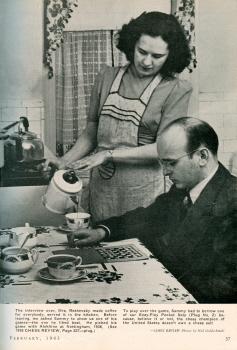

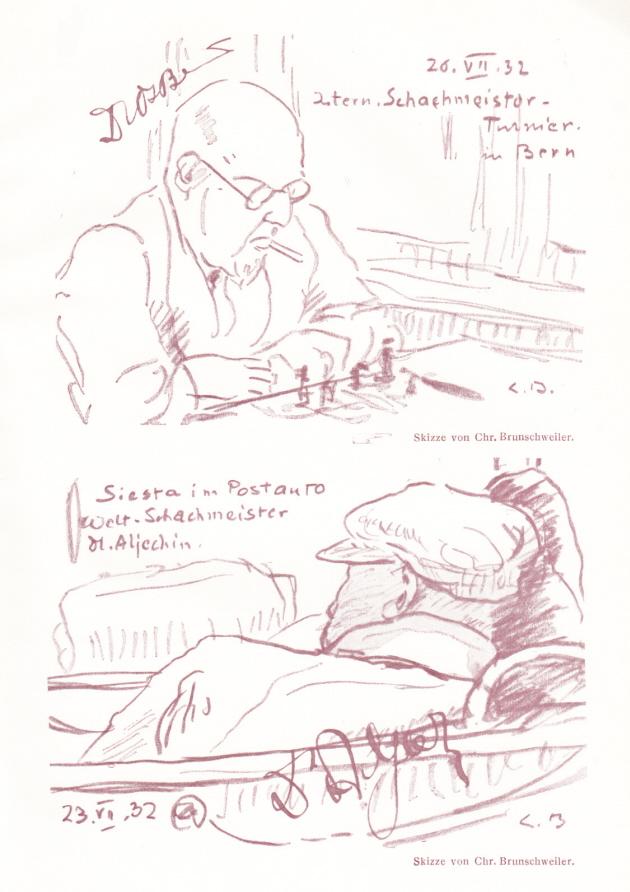
These sketches by Chr. Brunschweiler appeared in the Berne, 1932 tournament book.
Our feature article on Sultan Khan gives a group photograph of Berne, 1932, taken from the tournament book. From the same source comes the following:
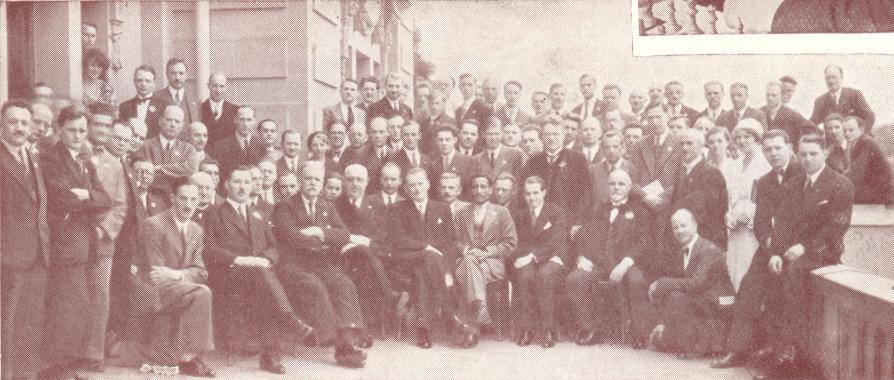
Little-known additions to our Stalemate feature article are always welcome. This position (White to move) comes from page 22 of the November 1900 Schweizerische Schachzeitung:
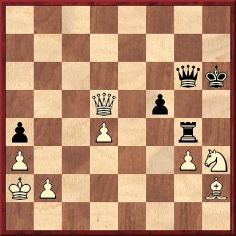
N.N. v J. Juchli, Zurich, before 1900
1 Nf4 Rxf4 2 gxf4 Qf7 3 Qxf7 Stalemate.
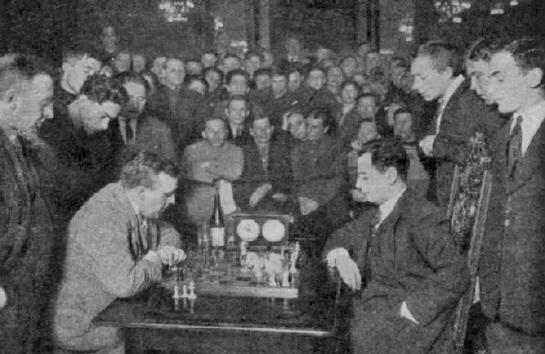
Regarding Capablanca v Bogoljubow, Moscow, 1925 we note a listing in a Capablanca section on page 65 of the Gazette of the Grolier Club, June/December 1975:

What more is known about the item, including its present whereabouts?

This illustration is of Luis Palau (1896-1971) and comes from page 44 of Schachkämpfer by Erwin Voellmy (Basle, 1927).
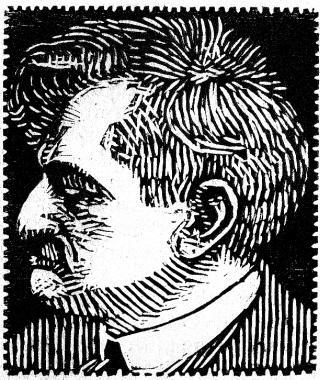
The above woodcut of Emanuel Lasker, another piece of work by Erwin Voellmy, was published on page 65 of the Schweizerische Schachzeitung, May 1924. It is similar to an illustration by W.H. Cozens on page 143 of the May 1959 BCM:
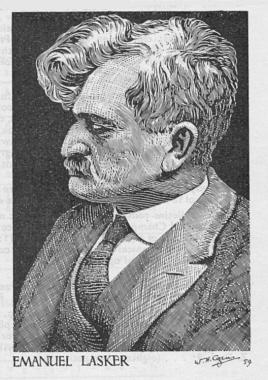
Another picture of Lasker by Cozens appeared on page 323 of the November 1964 BCM:
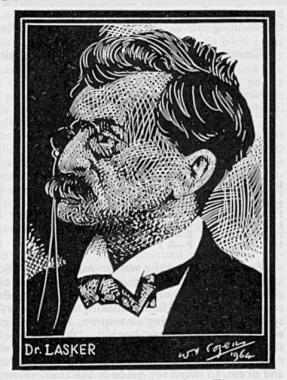
Per Skjoldager (Fredericia, Denmark) draws attention to the conclusion of the game Sämisch v Vidmar, Carlsbad, 1929. Below is the position after Black’s 42nd move, followed by the account by Alfred Brinckmann on page 60 of the tournament book:
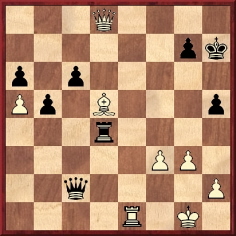
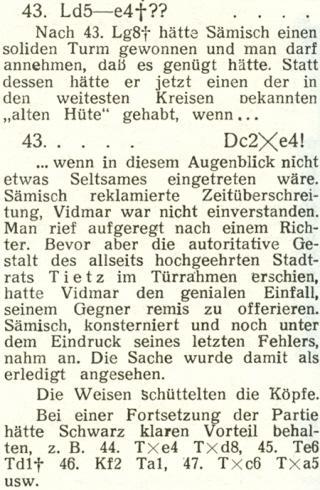
In short, Sämisch could have won a clear rook with 43 Bg8+. After 43...Qxe4 he claimed that Vidmar had overstepped the time-limit, but the latter disagreed. Before the controller arrived, Vidmar offered a draw, which Sämisch accepted. Brinckmann noted that after 44 Rxe4 Rxd8 45 Re6 Rd1+ 46 Kf2 Ra1 47 Rxc6 Rxa5 Black would have had a clear advantage.
Mr Skjoldager has found a slightly different account of the game’s conclusion on page 5 of Bohemia, 2 August 1929:
‘Das Damengambit Sämisch-Dr. Vidmar ergab einen sonderbaren Zwischenfall. Durch eine schöne aber nicht vollkommen korrekte Kombination gewann Sämisch eine Figur. Als er auch noch einen Turm gewinnen könnte, machte Sämisch einen grossen Fehler und stand glatt auf Verlust. Da warf er einem Blick auf die Kontrolluhr und sah, dass Dr. Vidmar die Zeit um zwei Minuten überschritten hatte. Sämisch reklamierte wegen Zeitüberschreitung. Bevor aber der Spielleiter Tietz eine Entscheidung treffen konnte, hatte Dr. Vidmar seinen Gegner Remis angeboten, das Sämisch annahm, so dass der Turnierleiter bereits keine weitere Entscheidung treffen konnte. Die Partie dürfte jedoch noch vor das Schiedsgericht kommen, weil sich die übrigen Spielteilnehmer mit dem Remis nicht einverstanden erklären wollen.’
Our translation:
‘The Queen’s Gambit between Sämisch and Dr Vidmar resulted in an unusual incident. By means of an attractive, though not entirely correct, combination Sämisch won a piece. When he was in a position to win a rook as well, he made a glaring error and found himself on the verge of losing. He then glanced at the clock and saw that Dr Vidmar had exceeded his time by two minutes. Sämisch claimed the game on time. However, before the controller, Tietz, could make a decision, Dr Vidmar offered his opponent a draw, which Sämisch accepted, so that no further decision by the controller could be taken. Nonetheless, the game will probably go before the appeals committee because the other players did not wish to give their agreement to the draw.’
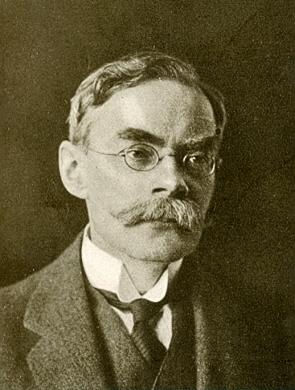
Reginald Pryce Michell (Chess Pie, 1922, page 24)
In 1988 G.H. Diggle contributed the following anniversary article on R.P. Michell:
‘R.P. Michell (1873-1938), who died 50 years ago this May, is ranked in Harry Golombek’s Encyclopedia as “a British Master”, and this estimate seems to have been agreed by everyone except Michell himself. “Had my chess activities been less restrained”, he wrote in 1922, “I might have become half a class better than at present – might, in fact, have become a Minor Master. Prodigious.” On his coming first in the Brighton Congress in 1904, over F.J. Lee, P.S. Leonhardt, and “Mr G.A. Thomas” as he then was, the BCM invited him to write as a new “celebrity” and send his photograph for reproduction. He replied: “I think the article will occupy quite space enough, considering that after all it only deals with an amateur player and not with one of the important masters.” And when at the great London Tournament of 1922 Michell won the Major Open, which included several masters, W.H. Watts in compiling Chess Pie had the greatest difficulty in getting a specimen game out of him – there wasn’t one good enough.
In one sense Michell’s estimate of himself was right. A civil servant at the Admiralty, he never let chess get on top of his work. He hardly ever played abroad, but was rather to be found competing in the formidable City of London Championship, and taking his holidays to fit in with the British Championship itself – though he was second several times and frequently in the first four, the immovable H.E. Atkins always stood, or rather towered, in his way. His greatest pride (though he played in eight Anglo-American Cable Matches with a level score) was his West London top-board record over 16 years – 93 wins, 59 draws, 22 losses.
As his career spanned 43 years (1895-1938) he encountered a vast panorama of opponents, ranging from the Reverend John Owen in 1895 (1-0) to such “glorious remnants” from the ’30s still remaining as “H.G.” and W. Ritson Morry, whom he met in his final Championship appearance in 1937. In between dawn and sunset, and divided by the 1914-18 War, came the Edwardian decade when his customary competitors included Atkins, Blackburne, Blake, Palmer, Shoosmith and Ward, and the post-war period when they faded away in favour of the emerging Goldstein, Gurnhill, Wheatcroft and Thomas (A.R.B.). Though frequently a prize-winner, Michell seldom “electrified” the Press or the gallery. Steadiness was his strong point – his efforts were usually summarized as follows: “played soundly and consistently throughout”, “no fireworks, but made few mistakes”, “does not skittle, but aims at accurate play even in offhand games”, “takes losses with his usual composure”. Only one incident seems ever to have disturbed his courteous equanimity. At Marienbad, 1925 there was “a crowd round the adjourned game he has just quitted. Comments and suggestions to his opponent are being freely expressed, till Michell, striding quickly to the centre of the group, with a single movement of the hand sweeps all the pieces off the board. The group breaks up, and his opponent flushes at the unspoken criticism” (BCM, July 1925, pages 295-296).
Another instance of his strong principles occurred at Hastings, 1934-1935, when in the final round he partially marred the “finest hour” of his friend and frequent opponent Sir George Thomas, who stood ahead of everyone else. And “everyone else” included Capablanca, Lilienthal, Botvinnik, Euwe and Flohr – yet only Euwe could overtake him if he lost. But Michell, though himself quite out of the running, refused to “go easy”, played for a win, and got it, depriving Sir George of a clear “first” in a magnificent “field”. At the prize-giving Flohr “expressed a wonder whether any other country could have furnished such an example”.
Although at Marienbad, 1925 when, aged 52, he was (in his own words) “overweighted” by Nimzowitsch, Rubinstein, Réti, Tartakower and Spielmann, ending bottom but one, he did better against foreign masters when they came to Britain, his best being Margate, 1923, where he was equal second with Bogoljubow, Alekhine and Muffang. His win in 53 moves against the first-named was called by du Mont “a game for the connoisseur”. At Hastings, 1925-26 he was third to Alekhine and Vidmar, but in the following year (for the steadiest player can never avoid one disastrous tournament if he perseveres) he lost eight games off the reel with a score of one. However, in 1930-31 he was fourth, drawing with Capablanca in 38 moves, and in 1932-33 fifth, beating Sultan Khan and drawing with Flohr. But after reaching 60 his scores began to decline. The 1936-37 Tournament saw an exceptionally strong foreign entry, including Alekhine, Fine, Eliskases and Vidmar. To give younger Britons a chance, Michell “cordially placed himself in the hands of the organizers for classification”. So his last two Hastings appearances were in the Premier Reserves – third in 1936-37 and ninth in 1937-38. Clearly his health was deteriorating – and a month later he contracted neuritis and never recovered. During his last illness his wife (herself twice British Ladies’ Champion) had to read to him all the available chess news right up to the end.
One last feat remains to be told. About 1926 Michell defeated the writer, then on holiday in town, in an offhand game. William Winter, whom I had met at the Gambit Café and who (though rather intolerant of “duffers”, as he called them) had a kindly streak where youthful players were concerned, asked me if I would like to see the famous City of London Club, where he was just going. I was in the Seventh Heaven when he took me round, and introduced me to the “Hon. Sec.” – the venerable J.H. Blake, who promptly enrolled me as a Country Member (one guinea a year) and procured me a game with none other than R.P.M., who happened to be on the premises and disengaged. So I faced the bespectacled veteran and his slightly “walrus” moustache. Neither on our introduction nor throughout the game did his manner give the slightest indication that he was not playing another master. However, one or two portly “lounge lizards”, eager to witness the “brutal baptism” of some incongruous youth who had somehow penetrated their precincts, gathered round, their very waistcoats saturated with sadistic expectation. Michell soon got an overwhelming attack on the king’s side, whereupon one “sarcastic old beast” observed: “You seem to have got the gentleman somewhat tied up”. “My QRP is weak” was all the change he could get out of R.P.M.’
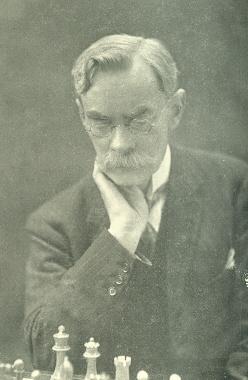
Reginald Pryce Michell. Frontispiece of R.P. Michell A Master of British Chess by J. du Mont (London, 1947)
The following item about Jim Phelan appeared on page 261 of CHESS, 16 June 1956:

Below is an abridgement of an episode related on pages 123-130 of Criminals in Real Life (London, 1956), whose dust-jacket describes Phelan as ‘blacksmith, journalist, ship’s fireman, film script writer, barman, broadcaster, navvy, actor, gun-runner, convict and tramp’.
‘Bill Brunty [also known as Brummy Braine – a fellow inmate of Phelan’s at Parkhurst Prison] was one of the chief jail-breakers of his day, if not the chief. ... He used to say, in joke, that his name was really Brontë, and that the famous literary sisters were his grandmother – all three of them. ...
In the intervals of fighting with the warders, Billy turned out some beautiful examples of handicraft work. (All illegal, of course; he was not allowed any tools or materials.) He made telescopes, microscopes, bone chessmen, little carved figures made from broken tooth-brushes, rings and bracelets of bone and wire; he even made fountain-pens. ...
He made me a very useful telescope, for six inches of pigtail tobacco, and he gave me a kaleidoscope “for nothing”, only coming to borrow three inches of pigtail a few days later. Then one day he sent me over a chess-piece, a white queen, carved from bone.
It was a lovely piece, and I told Billy so when I asked him the price. He glowed at the praise, said the price didn’t matter for the moment. Then I asked him how long the piece had taken him to carve.
“Six months you’d give me, eh?”, he inquired. Knowing the difficulties under which he worked, I nodded agreement. Then, since there are 32 pieces in a chess-set, and since all jail-humour is pretty grim, I made the correct wisecrack.
“In that case, Brummy”, I grinned, “all you need is three or four more laggings, and you’ll have the full set.” Brummy seemed to have been waiting for me to say something like that.
“I gottem now”, he asserted. “Got the whole set finished.” Promptly I offered him four ounces of pigtail for the chess-pieces.’
.The offer was refused, Phelan being requested instead to make him a key in the prison workshop. The exchange was made a few days later.
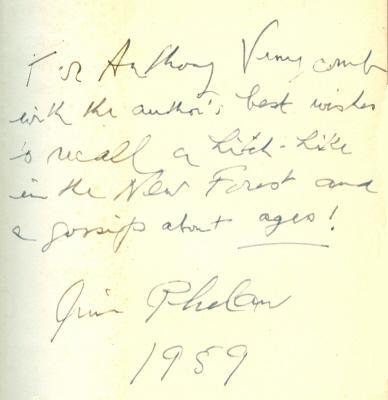
Our collection contains several books inscribed by Phelan, including Criminals in Real Life (above). The dust-jacket of our copy also features his handwritten ‘address’: ‘The Post Office, Burley, Ringwood’.
Phelan was a prolific author, and we plan to revert to his books
in a future item. As regards his vagabondage, in 1964 he presented
a BBC television programme, part of which is available on-line.
[Addition on 27 January 2014: link no longer working.]
An ultra-familiar chess quote is ‘When I am White I win because I am White. When I am Black I win because I am Bogoljubow.’ Wanted: early sightings of the phrase (e.g. during the master’s lifetime).
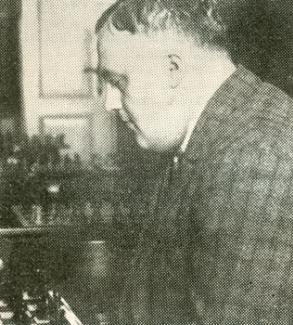
Efim Bogoljubow, Tijdschrift van den Nederlandschen Schaakbond, August-September 1933, page 222
‘... Chess is possibly the only game in the world in which it is impossible to cheat.’
So says a character in chapter 4 of Sweet Thursday by John Steinbeck (New York, 1954):
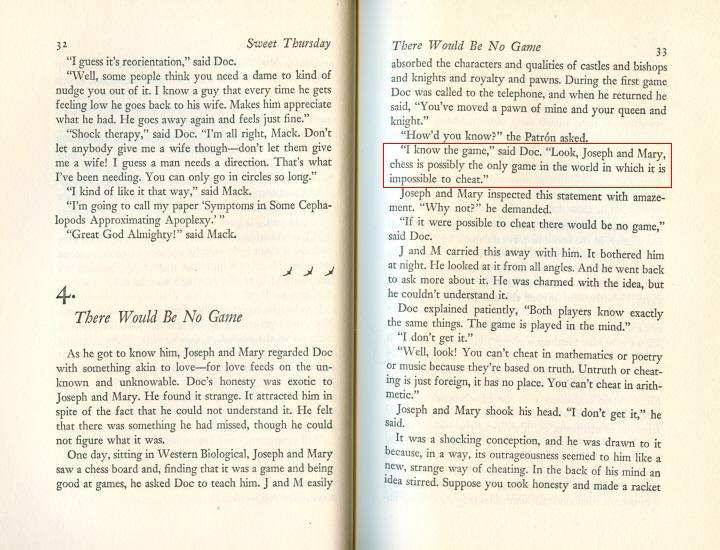
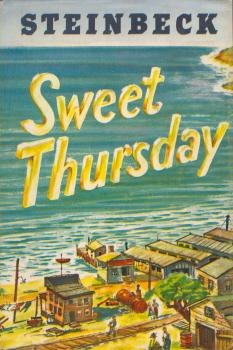
It may, though, be recalled from our feature article A Chessplaying Statesman that Sir John Simon remarked in a speech in Cambridge in March 1932:
‘... We may describe chess as the politician’s game, for obviously there are some qualities which make it particularly suitable for politicians; for example, nobody can cheat in chess. So far as I know it is the only game in the world in which it is impossible to cheat.’
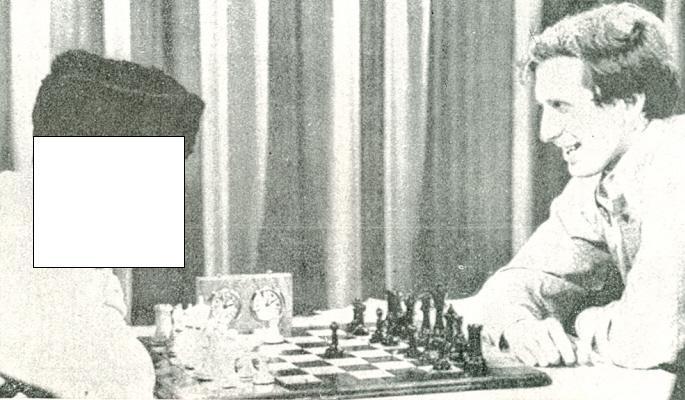
Readers are invited to identify the person with whom Fischer is, to borrow a mouldy expression favoured by captionists, ‘sharing a joke’.
Roland Kensdale (Aberdeen, Scotland) mentions that Jim Phelan was featured in the chapter ‘Chess in Captivity’ in Chess Pieces by Norman Knight (London, 1949). Our correspondent comments:
‘In his Foreword Sir George Thomas recalled (pages vii-viii) a simultaneous display which he gave in Parkhurst Prison while Phelan was an inmate:
“It has saddened me to learn from the section ‘Chess in Captivity’ that chess contact between the inmates of Parkhurst and the outside world has been discontinued. A simultaneous display I gave there, in the days of the author of Walls Have Mouths, is among the most prized of my chess memories. It was easy to sense what that short break meant to the prisoners. Never before or since have I had opponents so completely absorbed in the game, or been so conscious myself of a bond uniting us. When play was over, Jim Phelan – who appears in Walls Have Mouths – made the neatest speech of thanks I have ever heard; and another of the players gave me a sachet, made out of a piece of an old shirt and filled with lavender. My own enjoyment was marred only by the moment of departure; going into the fresh evening air and knowing that behind me keys were turning. Wholeheartedly I endorse Mr Knight’s plea for the encouragement of the game in every penal institution in the country.”
It is on pages 201-207 that the chess club at Parkhurst Prison is mentioned in an excerpt from the book Walls Have Mouths by Wilfred Macartney (London, 1936).
On pages 209-210 some of Phelan’s writing is quoted from CHESS, October 1943 (page 13). This includes a poem about play at Parkhurst.’
C.N. 1730 referred to an article by John Colapinto about Jeff Sarwer (‘All the Right Moves’) on pages 50-58 of Saturday Night, May 1988, and we also have Colapinto’s subsequent article on Sarwer (‘Point Zero’) on pages 210-217 and 266 of Vanity Fair, November 1989.
Now Amatzia Avni (Givaat-Shmuel, Israel) draws attention to Sarwer’s own webpage, which provides details regarding his two games against Josh Waitzkin. He presents a very different account from the one in Searching for Bobby Fischer by Fred Waitzkin (New York, 1988).
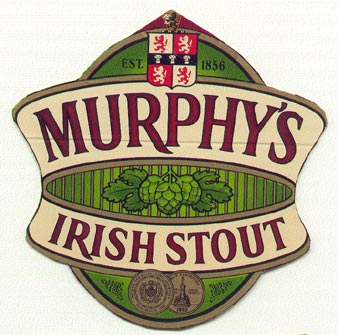
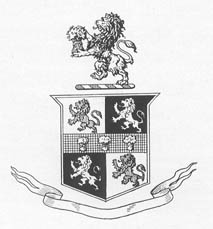
The above illustrations of a Murphy beer mat and of the Morphy family’s coat-of-arms were presented in C.N. 3516. Now Niall Woodger (Sandweiler, Luxembourg) writes:
‘Murphy and Morphy are derivations of the same name, both being Gaelic in origin, derived from “Murchadh”, meaning “sea warrior”. The Murphy brewery website states:
“The Murphy name is in fact the most popular name in Ireland and the Murphy family ... started the brewery back in 1856 as a noble family of the Cork region.”
The Brewery’s founder was James J. Murphy. An excellent website shows the Morphy coat-of-arms to be the same as the one you have displayed. There are six separate Murphy coats-of-arms given, of which four are almost identical to the Morphy one. Thus the Morphy and Murphy family histories are shown to be inextricably linked.’
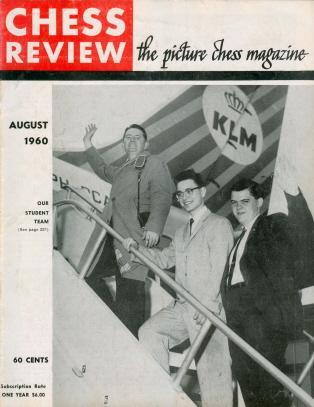
Left to right: Jerry
Spann (captain), Raymond Weinstein and William Lombardy (world
student team championship in Leningrad)
As recorded on page 127 of Chess Explorations (C.N. 1311), the late Sidney Bernstein informed us in the 1980s:
Collins discussed Weinstein’s chess career on pages 195-235 of his book My Seven Chess Prodigies (New York, 1974).
Also in a chess context, it may be recalled that Weinstein was described as having ‘a ruthless killer instinct’ on page 49 of the February 1964 BCM. The phrase was used in Beth Cassidy’s article ‘Fischer the Fantastic’ on the 1963-64 US Championship in New York:

Luc Winants (Boirs, Belgium) has taken up the difficult challenge of providing a key to the Liège, 1930 photograph in C.N. 5038:

Left to right,
seated: 1. E. Colle, 2. N.N., 3. A. Alekhine, 4. A. Nimzowitsch,
5. A. Rubinstein, 6. C. Ahues, 7. I. Pleci.
Standing: 8. N.N., 9. F.J. Marshall, 10. D. Przepiórka, 11. G.
Lalevitch, 12. E. Fischer, 13. V. Soultanbéieff, 14. N.N., 15.
A. Jarblum, 16. E. Liubarski, 17. F.D. Yates, 18. E.S. Tinsley.,
19. H. Weenink, 20. N.N., 21. N.N., 22. S. Tartakower, 23. N.N.,
24. H. Kmoch, 25. Sir George Thomas, 26. Sultan Khan, 27. N.N.,
28. I. Kashdan.
Our correspondent, who has been examining the photograph with Alexandre Soultanbéieff, comments:
‘Georges Lalevitch (11), Albert Jarblum (15) and Eugène Liubarski (16) were among the best players of the Liège Chess Club and regular opponents of Victor Soultanbéieff. E. Fischer (12) was once the President of the Club.’
Paintings of Emanuel Lasker by L. Nardus and M. Mopp were presented in C.N.s 3715 and 4091 respectively, and the work below was the frontispiece of Lasker’s Uchebnik shakhmatnoi igri (Moscow and Leningrad, 1926):
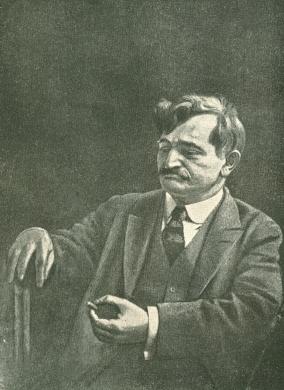
A further painting on which information will be appreciated was on the front cover of the January 1963 Chess Review:

The player at the board is Petar Trifunović, during a visit to the United States. The same painting was on page 61 of the February 1973 Chess Life & Review (obituary of Morris J. Kasper):
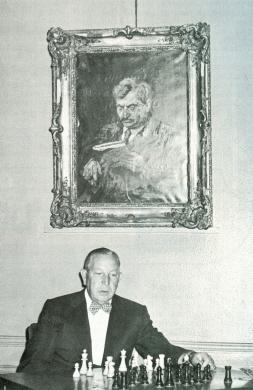
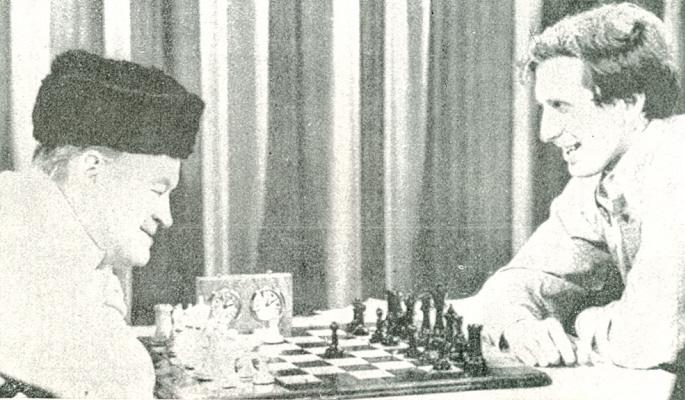
Bobby Fischer is at the board with Bob Hope (1903-2003) in a photograph on page 291 of a book on the 1972 Spassky v Fischer match, Campeonato del mundo (San Sebastián, 1972). An advertisement for the television programme appeared, inter alia, on pages 78-79 of CHESS, December 1972:
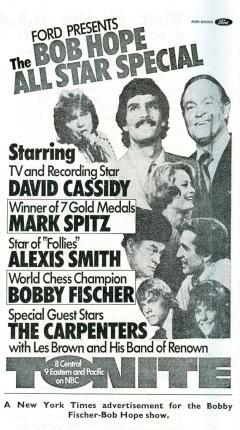
A recording of Fischer’s performance is commercially available.
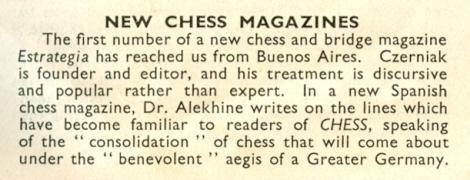
The above is a news item on page 129 of CHESS, June 1942. Can a reader identify the ‘new Spanish chess magazine’ and what did Alekhine write there?
The periodical Estrategia ran for six issues, from March to August 1942. The chess pages were conducted by Miguel Czerniak and the bridge section by Adolfo A. Gabarret. The April number had an obituary of Capablanca, and on pages 36-38 Czerniak annotated his loss to the Cuban at the Buenos Aires Olympiad, 1939 (see C.N. 4143).
Having awarded Capablanca’s 13 b4 two exclamation marks, he stated that he considered his reply (13...Bxb4) for nearly an hour, before becoming convinced that Capablanca’s combination was incorrect (‘how optimistic I was!’). In a later note he acknowledged that in accepting the sacrifice he had overlooked that at move 20 he would be unable to capture the white knight en prise at d4.
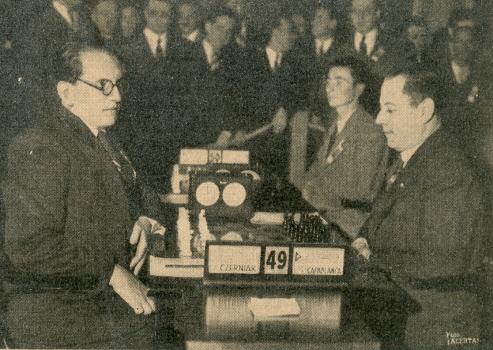
M. Czerniak and J.R. Capablanca, Buenos Aires, 1939
Annotating the game on pages 135-138 of his posthumous book Gran Ajedrez (Madrid, 1947) Alekhine stated that the line from 13 b4 onwards was ‘a very rare instance in modern chess of a master having to calculate so far ahead’.
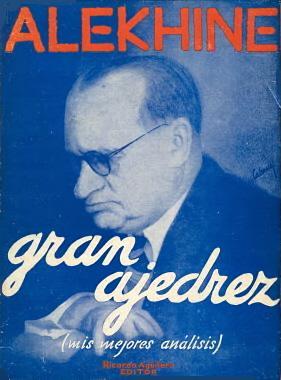
Is ‘George Hatfeild Dingley Gossip’ correct? That has been the customary spelling of chess writers ever since publication of the Oxford Companion to Chess in 1984, but what were the Companion’s grounds for switching from the previously used ‘Hatfield’? While recently processing our feature article on Gossip we felt uneasy, as on some earlier occasions, about ‘Hatfeild’, and not least because part of his education took place in Hatfield, Yorkshire.
C.N. 4705 quoted from page 315 of Emanuel Lasker The Life of a Chess Master by J. Hannak (London, 1959):
‘Next day Reuben Fine and his young wife came to see him [Lasker] for the last time. He could merely give them a feeble wave of his hand. When Fine had gone, Martha [Lasker’s wife] heard Emanuel whisper: “A King of Chess”.
These were the last words he was heard to speak. He died next day, on 13 [sic – 11] January 1941.’
From Javier Asturiano Molina (Murcia, Spain):
‘There is a slightly different version in the book Lasker: el difícil camino hacia la gloria by Miguel Ángel Nepomuceno (Madrid, 1991). On pages 237-239 the story of Lasker’s last days was related by Dr Platz and Martha Lasker, and the following words were attributed to Martha Lasker on page 238:
“Al día siguiente le visitaron por última vez Reuben Fine y su joven esposa. Sólo pudo hacerles una señal con la mano. Cuando se hubieron marchado, le oí susurrar esta frase: ‘Un rey del ajedrez’. Fueron las últimas palabras que salieron de su boca.”
English translation: “The following day Reuben Fine and his young wife visited him for the last time. He could merely give them a wave of his hand. When they had gone, I heard him whisper this phrase: ‘A King of Chess’. These were the last words he uttered.”
The book Lucha by Emanuel Lasker (Albacete, 2003) has a Preface by Ricardo Calvo which states (on pages 11-12):
“Una de las últimas frases que se le oyó, dirigida a su fiel esposa Martha, fue: ‘Qué hermosos eran los bosques y lagos de nuestra infancia.’
English translation: “One of the last sentences of his to be heard, spoken to his faithful wife Martha, was: ‘How beautiful were the forests and lakes of our childhood.’”
Joseph Platz discussed Lasker’s death on page 40 of his book Chess Memoirs (Coraopolis, 1979), referring to Hannak’s volume but not mentioning Fine.
Gene Gnandt (Houston, TX, USA) points out a report on page 12 of the New York Times, 24 January 1913 about the game between Whitaker and Capablanca in the New York tournament:
‘The result of this encounter was wholly contrary to general expectations, inasmuch as Whitaker, who had played really brilliant chess in the early stages of the game on Tuesday, was considered to have at least a draw in the adjourned position, with a chance of winning. After resumption of play yesterday, however, he played quite indifferently, though the position was an exceedingly difficult one to handle. He was eager to establish an advantage, and this led him to neglect providing a proper defense for his king.
Capablanca had sealed his 51st move, and this proved to be B-Q4. At his 56th turn he studied for 20 minutes, an indication that he, too, found the position one worthy of careful study. Finally, he appeared to have made up his mind, and placed his queen at QB6 without, however, relinquishing his hold upon the piece. Suddenly he switched away from that square and played the queen back to KKt8. Whether this manoeuvre served to distract his opponent in any way did not appear, but Whitaker nevertheless made a move which enabled the Cuban to win an important pawn through a check by discovery. This was inexplicable to the bystanders, who accepted it as a case of nervousness.
Later, Capablanca won the other of Whitaker’s centre pawns and then, getting out his rook, which had been bottled up for a long time, the Cuban soon had the game well in hand.
Whitaker resigned after 66 moves, when the black king rook’s pawn had been advanced to the seventh row and could not be stopped from queening. Thus was spoiled in the last dozen moves what might otherwise have ranked as a real masterpiece in the annals of the game.’
Here, for ease of reference, is the game-score, from page 55 of the March 1913 American Chess Bulletin:
1 d4 Nf6 2 Nf3 d6 3 Nc3 d5 4 Bf4 e6 5 e3 Bb4 6 Bd3 c5 7 O-O c4 8 Be2 Bxc3 9 bxc3 Ne4 10 Qe1 Qa5 11 Nd2 Nxc3
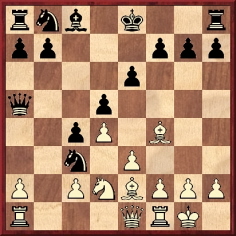
12 Bxc4 Nc6 13 Nb3 Qb4 14 Bd3 Na4 15 Qe2 O-O 16 Qh5 f5 17 g4 Qe7 18 gxf5 exf5 19 Kh1 Nb2 20 Be2 Nc4 21 Nc5 b6 22 Qf3 bxc5 23 Qxd5+ Be6 24 Qxc6 Rac8 25 Qg2 cxd4 26 exd4 Qd7 27 c3 Rf6 28 Rg1 Rg6 29 Qh3 Bd5+ 30 f3 Rg4 31 Rxg4 fxg4 32 Qg3 Qf5 33 Rg1 h5 34 h3 Rf8 35 Bxc4 Bxc4 36 Bd6 Rf6 37 Be5 Rg6 38 Kh2 Bd5 39 Qf4 Qc2+ 40 Rg2 Qd3 41 hxg4 Bxf3 42 Rd2 Qf1 43 g5 Qh1+ 44 Kg3 Bd5 45 Rf2 h4+ 46 Kg4 h3 47 Rb2 Be6+ 48 Kh5 Kh7 49 Re2 Qd1 50 Qd2 Qg1 51 Qf4
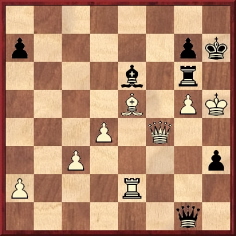
51...Bd5 52 Rd2 Bg2 53 Kh4 Kg8 54 Rb2 Kh7 55 c4 Qe1+ 56 Kg4
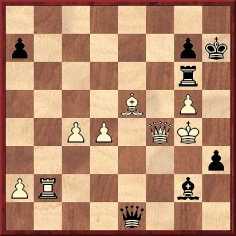
56...Qg1 57 d5 Bxd5+ 58 Qg3 Be6+ 59 Kf3 Qf1+ 60 Ke3 Qxc4 61 Bd4 Qc1+ 62 Rd2 Bf5 63 Qh4+ Kg8 64 Be5 Re6 65 Qd4 h2 66 Qd8+ Kh7 67 White resigns.
The American Chess Bulletin gave Black’s 62nd move as B-B4, but instead of Bf5 some sources (e.g. the Weltgeschichte des Schachs volume on Capablanca) have put Bc4, a move that would leave the pawn at h3 undefended.
We have also received from Gene Gnandt an article in the New York Times, 29 November 1925 (sports section, page S6). It states that on 27 November ...
‘... Capablanca met the united forces of the Bolshevik Commissars in a chess battle. In the apartment of Attorney General Krylenko, who also is President of the Russian Chess Club, the world champion played 17 games simultaneously with the Commissars and Under Secretaries, winning all.
After the exhibition Capablanca told the New York Times correspondent he did not have much difficulty, but agreed that first-class chess demanded more time than the majority of Soviet Commissars are able to give it. He said he regretted the absence of Trotsky, who is said to be a player of high quality.
President Rykof of the Commissar’s Council did not play, but followed the games with keen interest. Another notable absentee was Tchitcherin, whose favorite pastime, however, is music. He is now playing his own chess game on a bigger board in Western Europe.
The proceedings were strictly private, not more than a score of guests being present, and nothing appeared in the Soviet press.’
Miquel Artigas (Sabadell, Spain) reports that the article in question by Alekhine appeared in Ajedrez Español, January and February 1942 (pages 6-7 and 32-33).
It turns out to be the report on Munich, 1941 which we translated in C.N. 1233 from pages 187-189 of Alekhine’s book !Legado! (see pages 314-316 of Chess Facts and Fables). The full text is now available as a feature article.
John Hilbert (Amherst, NY, USA) enquires about a matter discussed on pages 195-197 of our book on Capablanca: Lasker’s allegation that owing to a defective clock he lost 20 minutes during his defeat at the hands of the Cuban at New York on 5 April 1924. We quoted from De Telegraaf of 3 January 1927 Lasker’s strong attack on the tournament organizers in explanation of his refusal to participate in New York, 1927.
Our correspondent asks whether the 1924 clock dispute was public knowledge before Lasker’s article appeared nearly three years later.
We are still looking for the full game-score of Lund v Nimzowitsch, Kristiania, 6 May 1921 (in a simultaneous display against 20 players). At present we have only the conclusion, as annotated by Nimzowitsch on page 164 of Kagans Neueste Schachnachrichten, 1 April 1925:
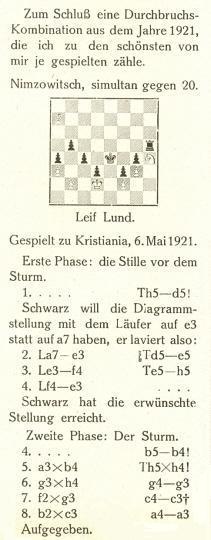
Jon Crumiller (Princeton, NJ, USA) informs us that he possesses a
chess
board signed by many participants in the Buenos Aires, 1939
Olympiad, including Alekhine, Capablanca and Keres. It will be
noted that our correspondent (who is a chess collector, and not a
dealer) presents a number of other attractive items on his
webpages.
Sandro Litigio (Como, Italy) writes:
‘The Italian word isolani is the plural form of the adjective/noun isolano (island/insular/islander), while the corresponding Latin word is insulanus.’
C.N. 5047 quoted the appearance of the word isolani in Nimzowitsch’s Mein System in the mid-1920s, but we have now found it in Leonhardt’s annotations to the game Dus-Chotimirsky v Tarrasch, Hamburg, 1910. Published in the Hamburger Nachrichten of 21 August 1910, the notes were reproduced on pages 357-359 of the October-November 1910 Wiener Schachzeitung. After 1 d4 d5 2 c4 e6 3 Nf3 c5 4 e3 Nf6 5 Nc3 Nc6 6 a3 Bd6 7 dxc5 Bxc5 8 b4 Bd6 9 Bb2 O-O 10 cxd5 exd5 11 Nb5 Bb8 there is the following:

Can earlier instances of the term be found, in the writings of Leonhardt, Nimzowitsch or anyone else?
A possible explanation occurs to us regarding the singular/plural puzzle. Depending on the context, the German preposition vor (in front of) takes either the accusative or the dative case, but with a masculine noun (such as Isolani) the definite article would be den in both instances. For example:
a) Knights are effective when they stand in front of the isolated pawns. Springer sind wirkungsvoll, wenn sie vor den Isolani stehen. (Dative plural.)
b) White places his knight in front of the isolated pawn. Weiss setzt seinen Springer vor den Isolani. (Accusative singular.)
Is it conceivable that a German sentence such as the one in a) above was misinterpreted as the accusative singular, with the result that Isolani came to be regarded as a singular noun?
A more general question still outstanding, of course, is why an Italian word was used.
Jan Kalendovský (Brno, Czech Republic) draws attention to an Amsterdam website whose picture archives include many chess photographs. Some particularly interesting ones can be found by searching for the names Aljechin, Capablanca and Euwe.
The passage below from page 259 of The Name’s Phelan by Jim Phelan (London, 1948) concerns his time in Dorset after the First World War:
‘Much of the chess I played, in the intervals of wasting my time around the tank park, was with a curious, overstrung, distant person who might have been Irish but had never been in Ireland. Acting-Lance-Corporal Shaw was on (some of) his correspondence. I never had time to find out if he was really Lawrence of Arabia. Everyone in camp said so, as a dead secret reminiscent of the Dublin Sporting Echo. Except those who said he was the rightful King of England, with similar theories.’
The autobiography’s dedication page comprised two words: ‘For myself’.
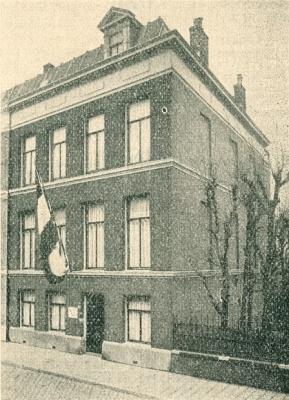
| First column | << previous | Archives [36] | next >> | Current column |
Copyright 2007 Edward Winter. All rights reserved.